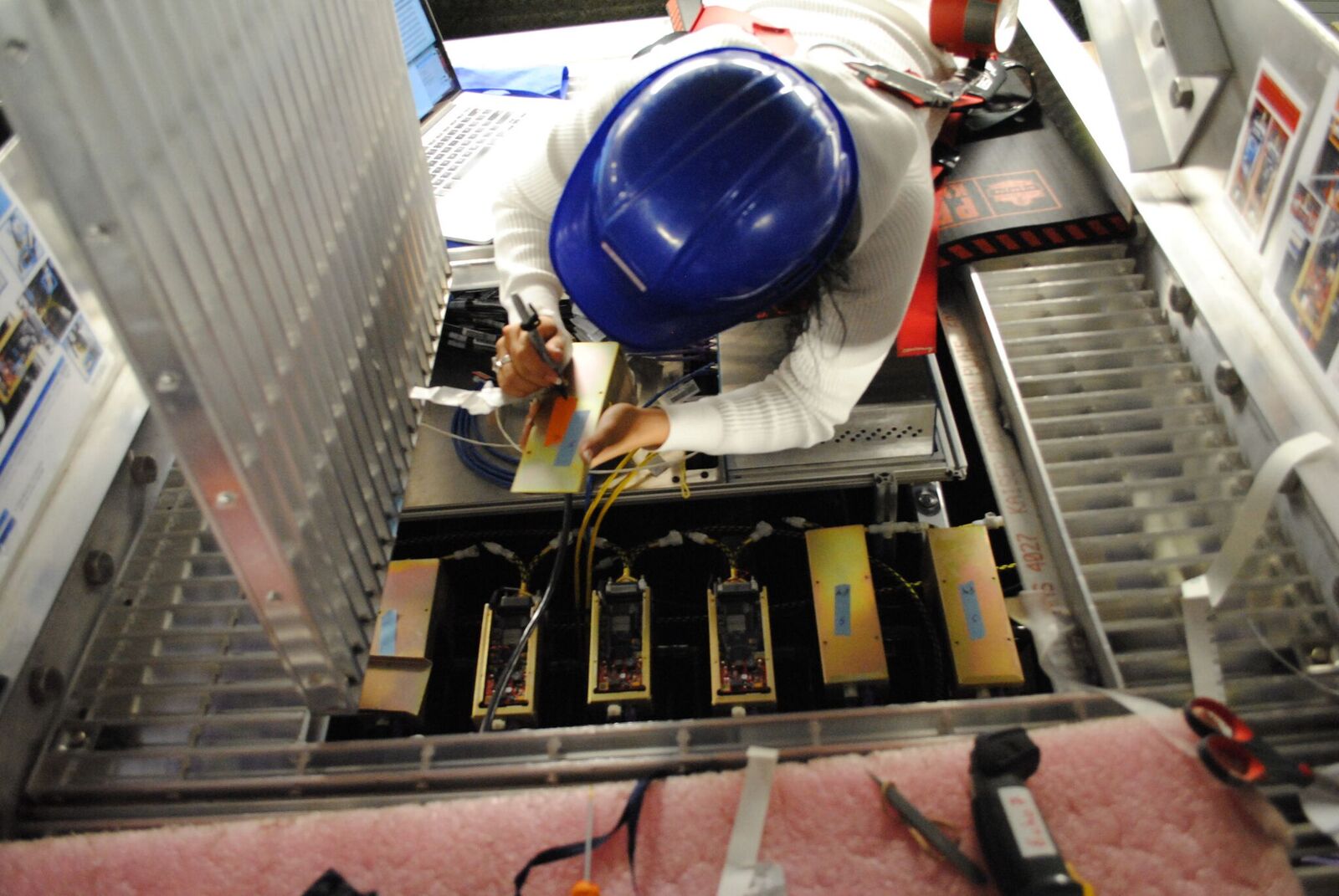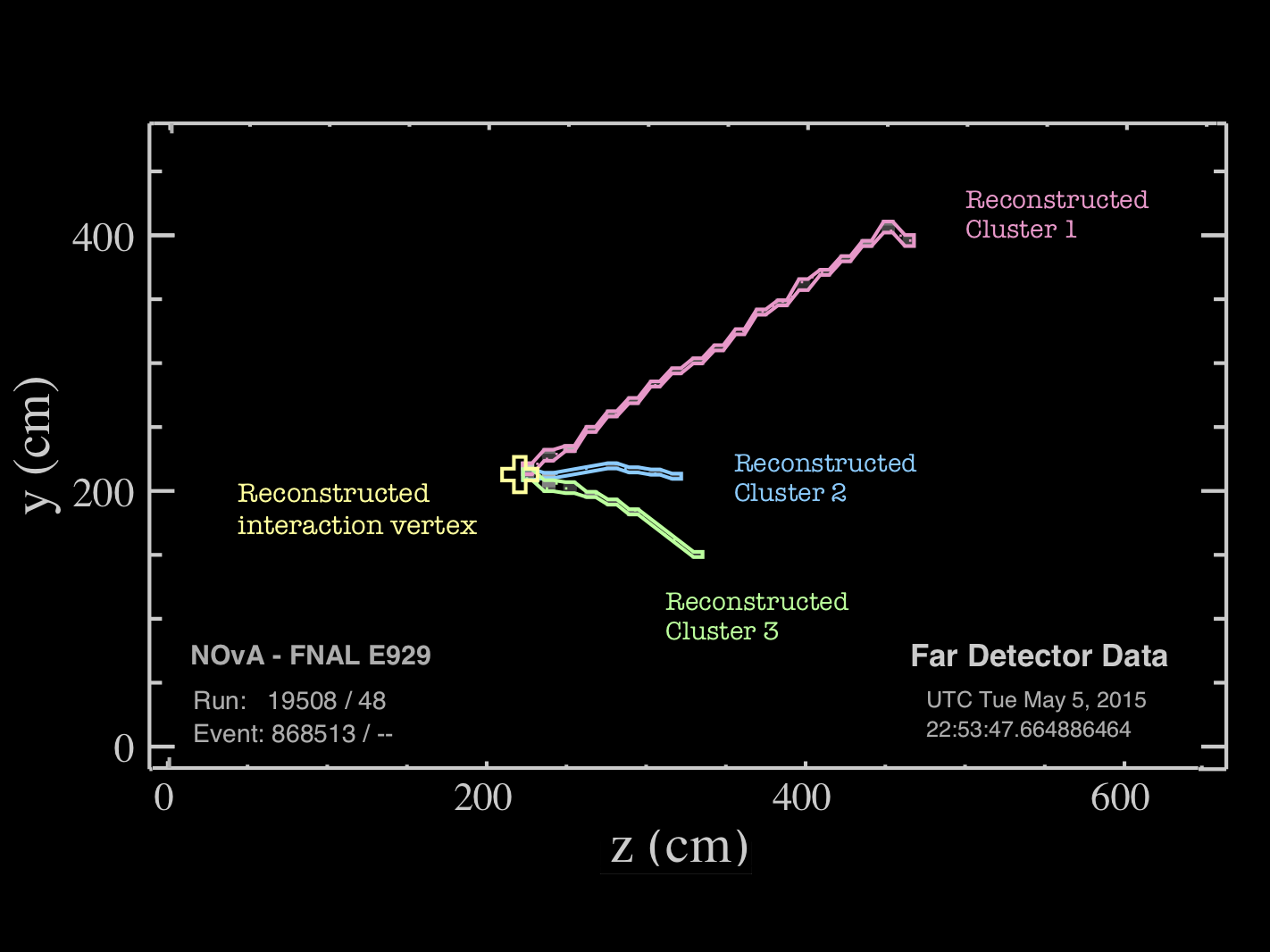Fernanda Psihas
These are the questions currently guiding my research program.





WHAT IF WE INJECTED XENON INTO THE NEXT GENERATION EXPERIMENTS?
Doping detectors like DUNE could be the best way to search for the ultra-rare process called neutrino-less double beta decay.
You might say “But wait, DUNE detectors will add up to 40 ktons of liquid argon! How much Xenon would you even need? Would you change the way DUNE works? Is DUNE even capable of searching for that very low energy decay?” To which I would reply “welcome to the world of experimental research and development!”
I am currently working on ways to answer these and other questions, estimating just how this could work and what impact it would have in our ability to search for these decays! You can check out a sneak peak here.
WHAT IF STERILE NEUTRINOS DID NOT EXIST? HOW WOULD WE EVEN TELL?
I am currently working on Fermilab’s short-baseline neutrino program. The SBN will study neutrinos from Fermilab's booster beam to resolve the question of sterile neutrinos, to elucidate their physics, and to test the next generation detector technologies for DUNE!
Sterile neutrinos were proposed to explain anomalies observed by other experiments. Their existence would mean that some of Fermilab Booster’s muon neutrinos would change into electron neutrinos… but others would seemingly disappear… SBN will look for both an excess of electron neutrinos and an unaccounted deficit of muon neutrinos from the same beam.
SBN also uses the latest and greatest liquid argon LAr particle direction technology, paving the way for next generation experiments like DUNE, which will use this technology at a much larger scale.
WHAT IF NEUTRINOS WERE NOTHING LIKE WHAT WE EXPECTED?
This actually happened! Neutrinos were found to oscillate in experiments in the late 90s, demonstrating that they were nothing like we originally expected.
The NOvA experiment and others have measured neutrino oscillations to increase our understanding of this phenomenon. My work on NOvA contributed to some of the most precise measurements of neutrino oscillations ever made.
NOvA is taking data until 2025 and will continue to inform the design and analysis of the next generation neutrino experiments. NOvA is a collaboration of over 150 scientists from the U.S. and around the world and one of the most positive organizations I have ever been a part of. NOvA was more than a job, it was a family!
WHAT IF ARTIFICIAL INTELLIGENCE COULD BE UNDERSTOOD AND BULLET-PROOFED?
Many neutrino experimenters employ and develop the tools of artificial intelligence. But there’s an important caveat. The tasks that we asks AI to perform for us always have known and unknown levels of uncertainty.
Luckily, particle physicists are especially good at solving these types of problems and we are OBSESSED with uncertainty quantification. Some of my work using AI for particle physics involves incorporating our physics knowledge into the applications, and designing tests of their potential biases and the uncertainty in their performance.
WHAT IF NEUTRINOS WERE THEIR OWN ANTI-PARTICLE?
Neutrinos might still have more surprises in store. If they are discovered to be their own anti-particle, they might even help us explain why our universe is made of matter and not anti-matter. But how would we know if this is the case?
There is an ultra-rare process called neutrino-less double beta decay, which is only allowed by the laws of physics if neutrinos are, indeed, their own anti-particle. The problem is that the life-time for this decay must be at least 10^26 years, because no-one has observed it yet.
The NEXT experiment is searching for this decay in xenon with increasing amounts of this isotope (one day maybe a full ton of it!). My work on NEXT contributed to the development of detector technologies that would enable and enhance our ability to search for this decay.